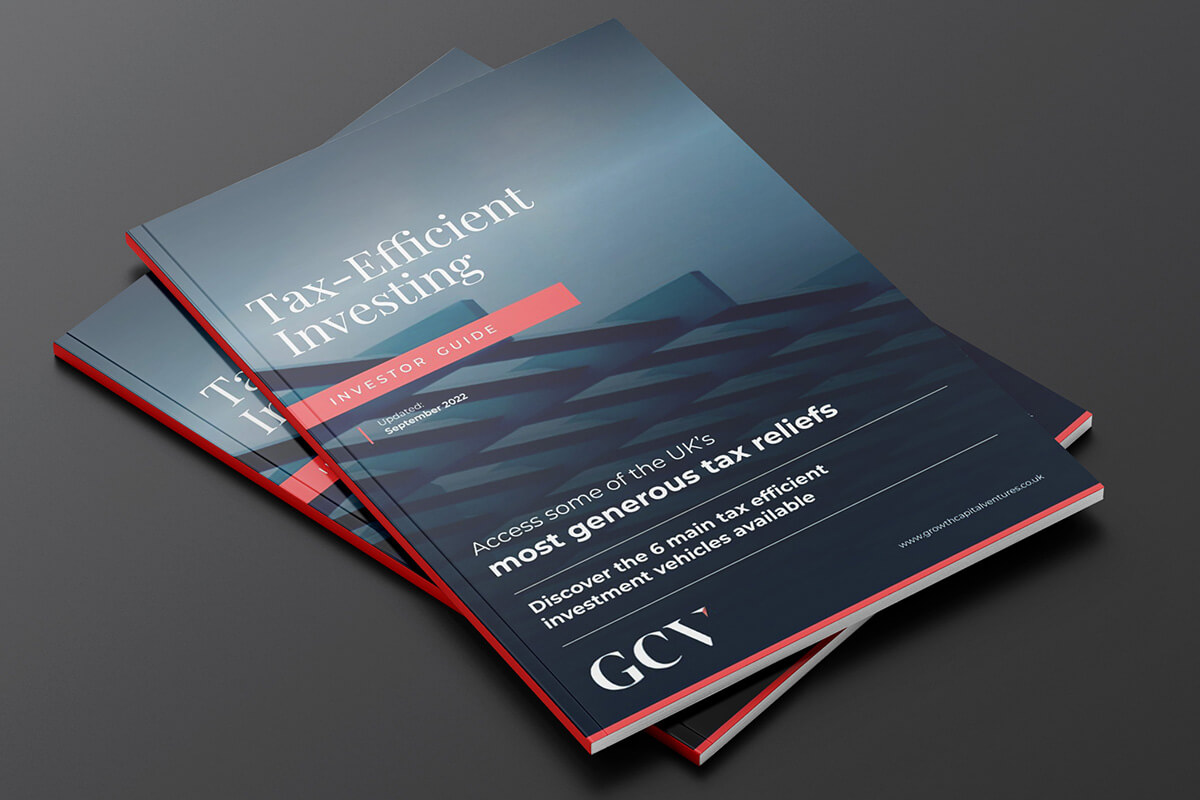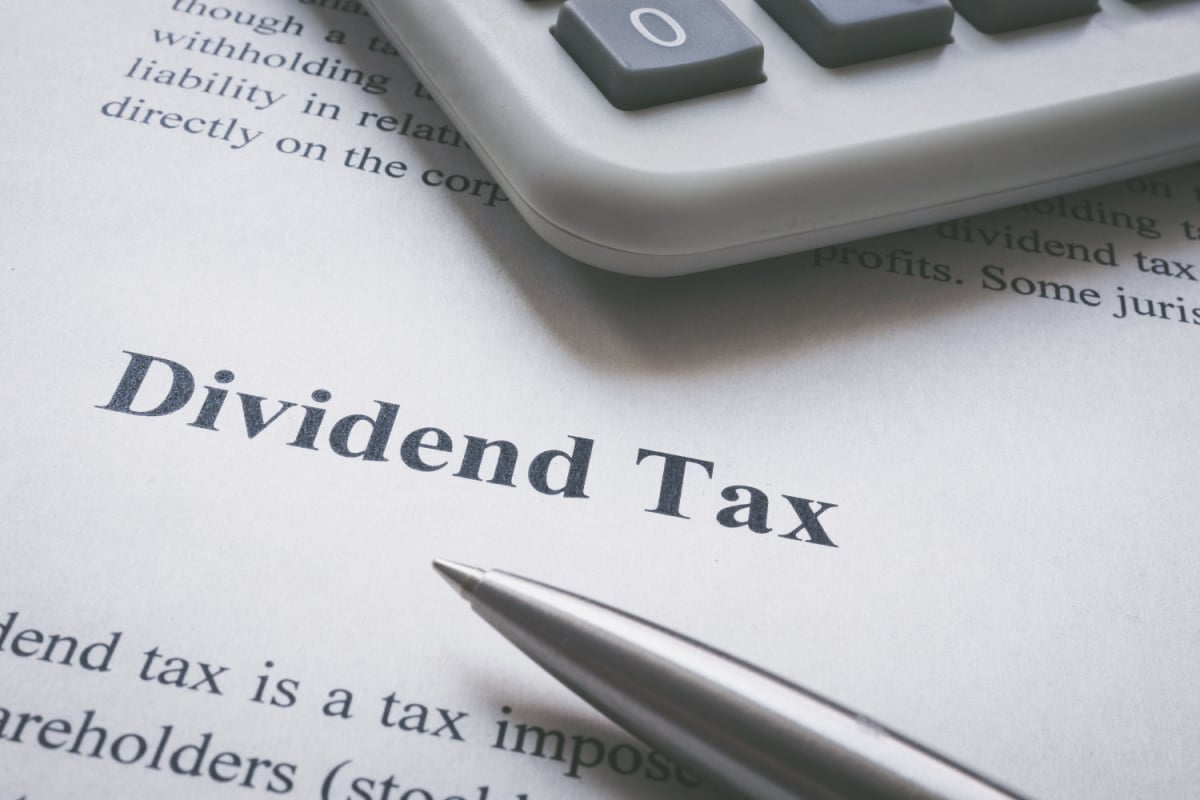8 tax-efficient investments for higher rate taxpayers
Recent tax changes in the UK have made tax-efficient investments increasingly attractive for higher-rate taxpayers.
With the income tax threshold for additional rate taxpayers falling from £150,000 to £125,141 in April 2023—and with key allowances remaining frozen despite periods of high inflation—the effective tax burden on UK residents has grown significantly. These frozen income tax allowances mean that as inflation drives up living costs and wages, taxpayers are effectively facing higher rates even without a formal increase in the tax rates themselves.
In this fiscal climate, it’s more important than ever to explore strategies that mitigate these increasingly large tax bills. Currently, eight of the most effective tax-efficient investments for higher-rate taxpayers in the UK include:
- The Enterprise Investment Scheme (EIS)
- The Seed Enterprise Investment Scheme (SEIS)
- Venture Capital Trusts (VCTs)
- Social Investment Tax Relief (SITR)
- Individual Savings Accounts (ISAs)
- AIM ISAs
- Self-Invested Personal Pensions (SIPPs)
- Small Self-Administered Schemes (SSASs)
What are tax-efficient investments?
Certain investment routes, particularly those that fall within the UK Government’s Venture Capital Schemes, can provide investors with the ability to minimise their income tax, capital gains tax (CGT), inheritance tax (IHT), and dividends tax liabilities simultaneously, while also targeting significant investment growth.
Known as tax-efficient investments, these are designed to provide tax breaks for investors – enabling them to optimise their overall tax position – whilst contributing to their pension schemes and helping to fund the growth of early-stage companies.

For higher-rate and additional-rate taxpayers, these opportunities are particularly valuable as they facilitate effective tax planning and offer the ability to minimise overall investment risk whilst maximising return potential.
Within this space, eight options are often outlined as the most effective routes for higher-rate taxpayers in particular:
1. Enterprise Investment Scheme (EIS)
The EIS was introduced in 1994 with one core mission: to stimulate growth across the UK startup and scaleup landscape using the support of private investors.
Since then, the EIS has attracted more than £34bn of private investment for over 42,000 small and medium enterprises (SMEs), largely due to the sought-after investor incentives the scheme provides.
The Enterprise Investment Scheme encourages investment in UK startup companies by offering investors a range of generous tax incentives in return for their financial support. Notably, investors can claim 30% income tax relief on a maximum annual investment of £1m (or £2m, if additional capital is allocated to knowledge-intensive companies [KICs]).
A knowledge-intensive company is defined as a business that conducts research and development (R&D) as its main business activity. Following the Treasury’s Autumn Budget in 2017, KICs are eligible for more EIS funding and less strict eligibility criteria compared to other companies.
Overall, investors can take advantage of the following EIS tax reliefs:
- Income tax relief of 30% – Effective investor spend of 70p for every £1 invested (provided shares have been held for at least three years)
- Capital gains tax exemption – No CGT to pay when gains are realised (24% abouve the £3,000 Capital Gains Allowance)
- Capital gains tax deferral relief – Ability to defer the payment of an existing CGT bill to future years
- Inheritance tax exemption – No IHT to pay on EIS investments upon the shareholder’s passing (usually 40%)
- Loss relief – Offset any potential losses by the investor’s marginal rate of income tax or CGT using EIS loss relief

2. Seed Enterprise Investment Scheme (SEIS)
The SEIS is the sister scheme of the EIS. Since its introduction in 2012, the SEIS has attracted over £1.78bn of investment for over 20,000 SMEs.
Whilst both the SEIS and EIS share the same overarching mission, the SEIS is focused on encouraging private investment into particularly earlier-stage startups. As a result, the Seed Enterprise Investment Scheme offers investors a comparatively more generous range of tax reliefs, including up to 50% income tax relief.
Many investors – especially those with an increased risk tolerance – may be particularly interested in SEIS-eligible companies, largely due to their early-stage nature and more significant potential for growth, as well as the more generous range of tax reliefs they can offer:
- Income tax relief of 50% – Effective investor spend of 50p for every £1 invested (provided shares have been held for at least three years)
- Capital gains tax exemption – No CGT to pay when gains are realised (usually 20%)
- Capital gains tax reinvestment relief – Ability to reduce an existing CGT bill by up to 50%
- Inheritance tax exemption – No IHT to pay on shares upon passing (usually 40%)
- Loss relief – Offset any potential losses by the investor’s marginal rate of income tax or CGT
For example: An investor can allocate the maximum annual SEIS investment amount – £200,000 in the 2024/25 tax year (double the 2022/23 maximum) – and receive 50% income tax relief on their investment (provided they hold the shares for three years or more).
This means that an investor can claim back £100,000 in income tax, reducing their capital exposure to 50p for each £1 invested and ultimately minimising overall investment risk whilst maximising return potential.
Investing in a SEIS-qualifying company can provide high earners and high-net-worth individuals (HNWIs) with significant tax advantages, as well as exposure to high-target growth investment opportunities. But it must be noted that these are higher-risk alternative investments. Your capital is at risk – returns are not guaranteed.
3. Venture Capital Trusts (VCTs)
Similar to the EIS and SEIS, a Venture Capital Trust (VCT) is an investment vehicle designed to provide funds to early-stage companies with high growth potential.
VCTs are publicly traded investment vehicles that raise capital from investors to deploy to small, unlisted companies.
The funds raised by VCTs are invested in a portfolio of eligible businesses; VCTs must invest in companies that meet specific criteria, such as being unquoted or AIM-listed. This helps to ensure the investment targets early-stage businesses with high-growth potential – companies that can benefit most from the capital and support provided by VCTs.
In return for providing the necessary capital and expertise, VCT investors have the opportunity to benefit from potential capital appreciation and income generated by the investment.
Furthermore, when investing in new VCT shares, investors are entitled to claim several tax incentives on a total investment amount of up to £200,000. These include:
- Income tax relief – Up to 30% income tax relief on the amount invested, provided that the VCT shares for at least five years
- Tax-free capital gains – If you decide to sell your VCT shares and you make a profit, the proceeds will not be liable for CGT
- Tax-free dividends – If your VCT pays dividends, there is no tax to pay, and you won’t need to declare them on your tax return
It is important to note that VCT tax reliefs aren't as generous as the EIS and SEIS. Their target growth is generally lower and they often charge both management fees (typically 2% per year) and performance fees (typically 20% of any profit).
Investing in VCTs can be attractive for individuals who are seeking tax-efficient ways to invest in early-stage companies. It is advisable to consult with a financial advisor who can provide guidance on VCT investments, assess the suitability based on individual circumstances, and help manage the associated risks if you decide to consider this route further.
4. Social Investment Tax Relief (SITR)
SITR is an investment scheme in the UK which is designed to encourage investment in social enterprises. It aims to attract individuals who are keen to make investments that generate wider positive impacts alongside competitive financial returns.
SITR offers investors a range of tax reliefs similar to those of the EIS:
- Income tax relief – Up to 30% income tax relief on the amount invested
- Capital gains tax deferral – If a chargeable gain is reinvested into a SITR-qualifying investment, the associated CGT liability is deferred until the SITR investment is disposed of
- Tax-free gains – Capital gains earned on disposal are free of CGT, but any interest or redemption premium on debt would be taxed as income and are therefore is not tax-free
Importantly, investing in SITR-eligible companies enables individuals to support businesses that generate positive impacts. Social enterprises typically focus on addressing social or environmental issues, and by investing in these enterprises, individuals can contribute to positive societal change whilst targeting financial returns.
Seeking advice from a financial advisor is crucial to ensure investments align with individual financial goals, risk tolerance, and investment strategy. Understanding the eligibility criteria and conducting thorough due diligence is essential before making investment decisions.
5. Individual Savings Accounts (ISAs)
ISAs are popular tax-efficient investment vehicles available to all individuals in the UK. They provide a tax-free environment for savings and investments and have an annual contribution limit of £20,000 in the 2024/25 tax year.
There are four main types of ISA: Stocks and Shares ISA, Lifetime ISA, Cash ISA and Innovative Finance ISA (IFISA). The £20,000 annual limit can be allocated solely into one ISA or spread across multiple ISAs.
Stocks and Shares ISAs and IFISAs are the two investment-focused ISAs. The former enables an individual to hold stocks and shares in a tax-efficient manner, and the latter allows investors to hold bonds, loan notes, peer-to-peer loans and debentures whilst making use of the ISA tax advantages.
By utilising ISAs, taxpayers can shield their investment gains from a range of taxes. This is increasingly important as the UK faces one of its greatest tax drives. Notably, one in five income taxpayers will soon be paying the higher 40% rate, up from fewer than one in 20 taxpayers in the 1990s.
It should be noted that ISAs do not provide the same forms of tax relief as can be accessed via the EIS, SEIS, VCTs and SITR. Rather, assets such as stocks and shares held within the ISA tax wrapper are themselves free of tax, but tax reliefs cannot be transferred to tax liabilities from other assets (as can be done via SEIS reinvestment relief and EIS deferral relief, for example).
Overall, ISAs can offer investors the following tax features:
- Capital gains tax exemption – Profits earned from assets held within the ISA are exempt from capital gains tax
- Dividends tax exemption – Receive dividends free of tax (an important feature especially with the dividends tax allowance falling from £2,000 to £1,000, and later scheduled to reduce to £500)
6. AIM ISAs
AIM ISAs are a specific type of Stocks and Shares ISA that allows investment in shares listed on the Alternative Investment Market (AIM) to benefit from the ISA tax advantages.
AIM is a junior exchange owned by the London Stock Exchange Group. Typically, it acts as a stepping stone for private companies to progress to the public market. But, for tax purposes, AIM-listed companies are still classed as unlisted stocks.
Investing in AIM-listed companies can offer significant growth opportunities and holding these investments within the ISA wrapper ensures tax-free returns – shielding both income and capital gains from tax.
Furthermore, AIM ISAs can also enable ISA assets to become exempt from inheritance tax (provided the shares have been held for at least two years) – a feature not offered by regular ISAs.
This new ability follows changed rules enabling AIM shares to be held within a Stocks and Shares ISA. Subsequently, this allows Business Property Relief (BPR) to be accessed via an ISA and therefore generates the potential to pass on the investment to beneficiaries without being liable for inheritance tax.
Overall, AIM ISAs can offer investors the following tax benefits:
- Capital gains tax exemption – Profits earned from assets held within the ISA are exempt from CGT
- Dividends tax exemption – Receive dividends free of tax (an important feature especially with the dividends tax allowance falling from £1,000 to £500 recently).
- Inheritance tax exemption – Investment is free of inheritance tax, provided that eligible AIM shares have been held for at least two years
It must be noted that an AIM ISA strategy involves a higher risk level than a traditional Stocks and Shares ISA. This is because AIM-listed stocks are typically smaller and earlier-stage than companies listed on the mainstream London Stock Exchange and can therefore pose increased risks.
7. Self-Invested Personal Pensions (SIPPs)
SIPPs are personal pension schemes that can offer greater control and flexibility over investment choices than traditional pensions as well as being brilliant tax-efficient investments for higher-rate taxpayers.
Taxpayers can benefit from the following tax benefits offered by SIPPs:
- Basic rate tax relief – The Government returns the 20% income tax you originally paid on the capital you used to fund your pension contributions. It is usually repaid automatically into your pension account several weeks after your contribution (known as ‘relief at source’). So, for every £80 you pay into your SIPP, for example, you can receive £20 in tax relief.
- Higher-rate tax relief – If you pay income tax at the higher rate (40%) or additional rate (45%), you can claim additional tax relief on your SIPP contributions – an extra £20 or £25, respectively, via your annual tax return. So it’s possible to pay as little as £55 into your pension to see a £100 investment.
Furthermore, investments held within a SIPP can grow tax-free and individuals can take up to 25% of their SIPP fund as a tax-free lump sum upon retirement.
8. Small Self-Administered Schemes (SSASs)
SSASs are occupational pension schemes designed for small businesses or groups of up to 11 individuals.
Similar to a SIPP, this scheme enables business owners and higher-rate taxpayers to gain more control over their pension funds.
Furthermore, SSASs can offer tax benefits that can reduce the overall tax liability of the group, such as contributions being deductible against business profits. As well as this, investments held within a SSAS can grow free of tax, and individuals can enjoy flexibility in terms of investment choices and the ability to lend finance to their business from the SSAS.
SSAS and SIPP pensions are similar in that both provide autonomy over how your pension pot is invested. The key difference is in the name: Self-Invested Personal Pensions give individual control over their investments, whereas SSAS pensions are for company directors and controlled by all trustees of the scheme. Ultimately, the entire pension pot belongs to the owner of the SIPP, whereas there are no individual pots in a SSAS. Rather, each share is defined by a percentage.
SSAS pensions are sometimes also known as ‘family pensions’. This is because non-employee family members can join, and the SSAS can also hold assets in trust and pay benefits to families long after the original members have passed.
SSAS pensions offer largely the same tax benefits as other occupational pension schemes:
- Income tax relief – Taxpayers can receive income tax relief at their marginal rate
- Tax-free income and growth – Most assets and investments within the scheme attract no tax liabilities
Remember to seek advice from a qualified financial advisor to help assess your circumstances and determine the suitability of specific pension schemes like SIPPs and SSASs, as they involve long-term retirement planning and can have complex regulations and considerations.
Selecting the most appropriate tax-efficient investments for higher-rate taxpayers
Tax-efficient investments can present significant opportunities for higher-rate taxpayers to optimise their tax positions while simultaneously targeting substantial financial growth.
Today, amidst the UK Government’s recent fiscal changes and efforts to increase overall revenue from taxation, tax-efficient investments are especially important for high earners to be able to retain more of their income and wealth.
These investments can also help investors with tax planning for later life, contribute to the growth of dynamic early-stage businesses, and increase tax efficiency, alongside targeting significant financial growth.
Whether you are more inclined towards tax-efficient venture capital investments, pension contributions, ISAs, or a combination of each, determining which route is right for you involves conducting thorough due diligence and should be accompanied by advice from a professional financial advisor.
With the additional rate of income tax currently standing at 45% in the UK and multiple thresholds being reduced and frozen, it is important to be fully aware of the opportunities available to reduce your income tax bills and to ensure you don’t pay more tax than you need to.
Tax-Efficient Investments for Higher Rate Taxpayers FAQ
1. Can any of these options not be used together?
Generally, these schemes can be used in combination, but it's important to remain within the specific annual limits and eligibility rules of each. While you might hold an ISA alongside an EIS or a SIPP, the tax benefits of each are separate and cannot be transferred between schemes. Consulting a financial advisor can help you integrate them effectively into your overall strategy.
2. How do I decide which investment is best for my circumstances: SEIS or EIS?
The decision between SEIS and EIS comes down to your personal risk tolerance and investment goals. SEIS is designed for very early-stage companies and offers higher tax relief, making it suitable for those willing to take on more risk for potentially greater rewards. EIS targets more established startups with slightly lower risk and tax benefits. Consider your investment horizon, the size of your investment, and your overall portfolio diversification when making this choice.
3. How do investments in SIPPs and SSASs compare in terms of control and flexibility over my retirement planning?
Both SIPPs and SSASs offer greater control than traditional pensions, but they cater to different needs. SIPPs allow you to manage a diverse range of investments on your own, while SSASs are typically used by company directors or small groups and offer the added benefit of lending back to your business. The best option depends on whether you prefer individual control or a more collaborative, business-oriented approach.
4. How might future changes in tax policy or thresholds impact the benefits of these schemes?
Tax policies and thresholds are subject to change, which can influence the overall benefits of these schemes. Adjustments to tax rates or relief percentages could either enhance or reduce their attractiveness. Keeping abreast of any policy changes and regularly reviewing your investment strategy with a tax professional will help you adapt and continue to benefit from these tax-efficient investments.
5. What are the typical holding periods for these tax-efficient investments, and how should I factor these timeframes into my overall strategy?
Most of the best tax-efficient investments require a commitment of at least three years to fully unlock the tax benefits. This means they are generally more suitable for long-term planning. It's essential to align these holding periods with your liquidity needs and overall investment horizon and to plan your exit strategy accordingly to avoid any penalties or loss of tax relief.
Free Investor Guide
An investor's guide to tax efficient investing
Providing an insight into the tax efficient investment options accessible to UK investors, our free guide is a useful introduction to the schemes and wrappers that can help you maximise returns and savings while minimising risk when investing into early stage companies.

%20(3)%20(2).jpg)










